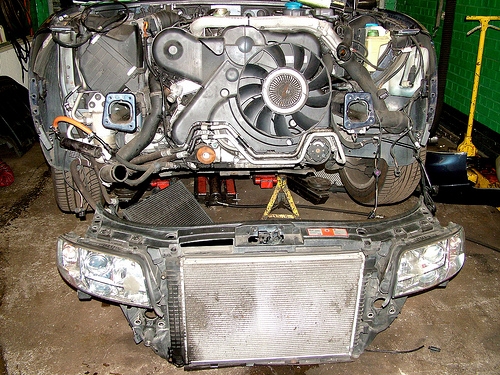
Introduced in the 1998 as the all-new Intrepid's abase engine, the 2.7L had everything going for it: all aluminum, dual overhead camshafts and 92 horsepower per liter. It weighed less than 2/3s of the previous generation's "high-output" 3.5L V6 and produced 95 percent of its horsepower while averaging 12 percent better fuel mileage. However, this engine has in recent years become one of the most reviled icons of corporate automotive trickery--and for good reason.
The 2.7L was never really a "clean-sheet" design engine, as it was originally billed. Essentially, it is an evolution of the 3.5L used since 1993 and varies from that engine primarily in displacement, the addition of overhead-cam heads and a variable intake manifold that gives it more mid-range power than does the larger engine. This engine belongs to a class of Chrysler V6s known as LH and can be found in just about every passenger car sold by Chrysler from 1998 to the 2008 Magnum SE.
In general, engine overheating is the result of cooling system failure, oiling system failure or internal engine failure. Depending on the vehicle so equipped, the LH has been known to suffer from all of the above, with no issue being more notorious than that of engine sludge.
According to industry experts at Lawyers and Settlements (and indirectly Chrysler itself), the LH motor's water pump has a tendency to leak coolant into the engine crankcase. Not only is this largely responsible for the oil sludge buildup, it causes pressure release and fluid loss in the cooling system. Since automotive cooling systems require a certain amount of system pressure to function effectively, even those cars regularly serviced and maintained with synthetic oil run slightly hotter than they should.
One less considered function of engine oil is as a coolant. Though the primary cooling is performed by a dedicated water system, all engines transfer excess heat from certain portions of the crankcase to others with the engine oil. With the 2.7L's narrow oil passages and near-infamous sludge problem, this cooling flow is often blocked in the hottest areas of the engine, leading to hot-spotting and blown gaskets.
Whether the manual specifies it or not, always use a full synthetic oil with a cleaning detergent in LH-engined cars. Synthetic oil will prevent further buildup from occurring, and a detergent additive will help to reverse the damage already done. Using a coolant system sealant like Bar's Stop-Leak will help to address the cooling system leaks inherent to many of these engines.